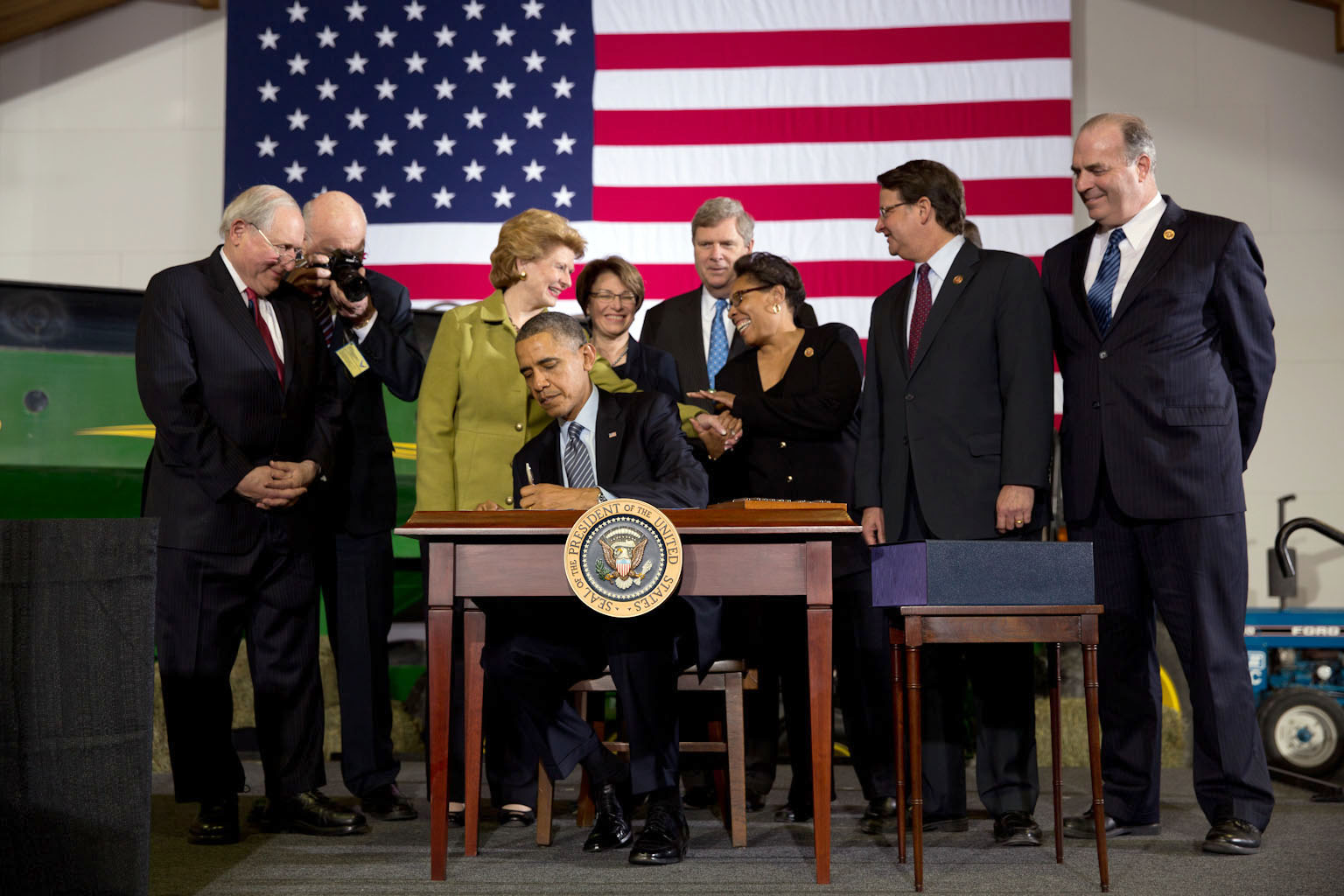Ms. Gaesser is currently pursuing a master’s degree in agriculture, food, and environment at the Friedman School of Nutrition Science and Policy at Tufts University.
About every five years, Congress passes an omnibus Farm Bill governing an array of agricultural and food programs. The historically bipartisan process has become more contentious in recent cycles, however, due to an increasingly polarized Congress. Legislative delays caused the 2002 and 2008 Farm Bills to expire and to be extended, and the 2014 Farm Bill expired last September without reauthorization or an extension. Although multi-issue debates contribute to these delays, disagreements over the nutrition title always seem to be at the heart of congressional gridlock.
The eight-month fight over the most recent Farm Bill hinged on the House Republicans’ proposed overhaul of the Supplemental Nutrition Assistance Program (SNAP), previously known as food stamps. A compromise bill—stripped of every controversial House GOP proposal on SNAP—eventually passed and was signed into law by President Trump in December. In the previous cycle, Republican demands for steep cuts to SNAP benefits also delayed the passage of the Farm Bill. The impasse led to an extension, but also prompted the House to pass a farm-only bill (H.R. 2642), followed a few months later by a stand-alone nutrition bill (H.R. 3102). The former authorized agriculture programs for five years, while the latter authorized SNAP for three years. Placing the bills on different timelines served to ensure that future reauthorizations would be considered separately. The separation was short-lived, as the House combined the bills when the legislation went to conference with the Senate, and President Obama ultimately signed a unified bill in 2014. Despite this bipartisan ending, the House leadership’s flirtation with decoupling the nutrition title from the Farm Bill begs the question: Would it be so wrong to have separate legislation for each?
The Farm Bill was initially conceived as part of the New Deal in response to the economic and environmental crises of the Great Depression and the Dust Bowl. Its original goals were to provide fair prices for farmers and consumers, ensure an adequate food supply, and protect natural resources. Food assistance has been connected to farm policy since the Agricultural Adjustment Act of 1933, but it wasn’t until forty years later that funding for the food stamp program and efforts to regulate and support commodity prices were combined into a single omnibus bill—the Agriculture and Consumer Protection Act of 1973. At the time, the combined bill was beneficial because neither was able to pass on its own and it helped bridge the schism between urban and rural congressional districts. But with the growth of the nutrition title and the increasing polarization both on Capitol Hill and across the nation, it has become harder for the farm programs to carry the food programs and harder for the food programs to garner votes for the farm programs.
SNAP has become the largest component of the Farm Bill, with the nutrition title accounting for 77 percent of all mandatory spending in the legislation. The remainder of the Congressional Budget Office baseline is allocated to agricultural programs and is used mostly for crop insurance, farm commodity programs, and conservation. When the farm bill expires, not all programs are affected equally. Many programs would cease to operate due to lack of funding, and a few would actually revert back to laws from 1938 and 1949. Two programs continue unchanged—crop insurance, which is permanently authorized by the Federal Crop Insurance Act, and SNAP, which is authorized through the Farm Bill but receives funding through appropriations. So, if SNAP can survive without a new Farm Bill, is it really fair that some farm programs be held hostage over disagreements regarding nutrition programs?
The allocation of funding seems disproportionate given the original intent of the Farm Bill. Both programs would be better served if they were separated. This could end the log-rolling arrangement between urban and rural delegations that insulates both programs from scrutiny on the merits. A farm-only bill would allow Congress to carefully evaluate and possibly reform the array of complex agricultural programs, with substance reigning over politics. Meanwhile, a stand-alone nutrition bill governing food assistance, food access, health, and well-being could be the first step toward a national food policy that a nation with rising obesity rates and an increase in nutrition-related chronic diseases so desperately needs. A more logical home for the nutrition title programs would be the Department of Health and Human Services, which administers numerous welfare programs similar to SNAP. The current farm bill process prevents any of this from happening, however, and beneficiaries of these programs, regardless of political ideologies, are suffering as a result.


